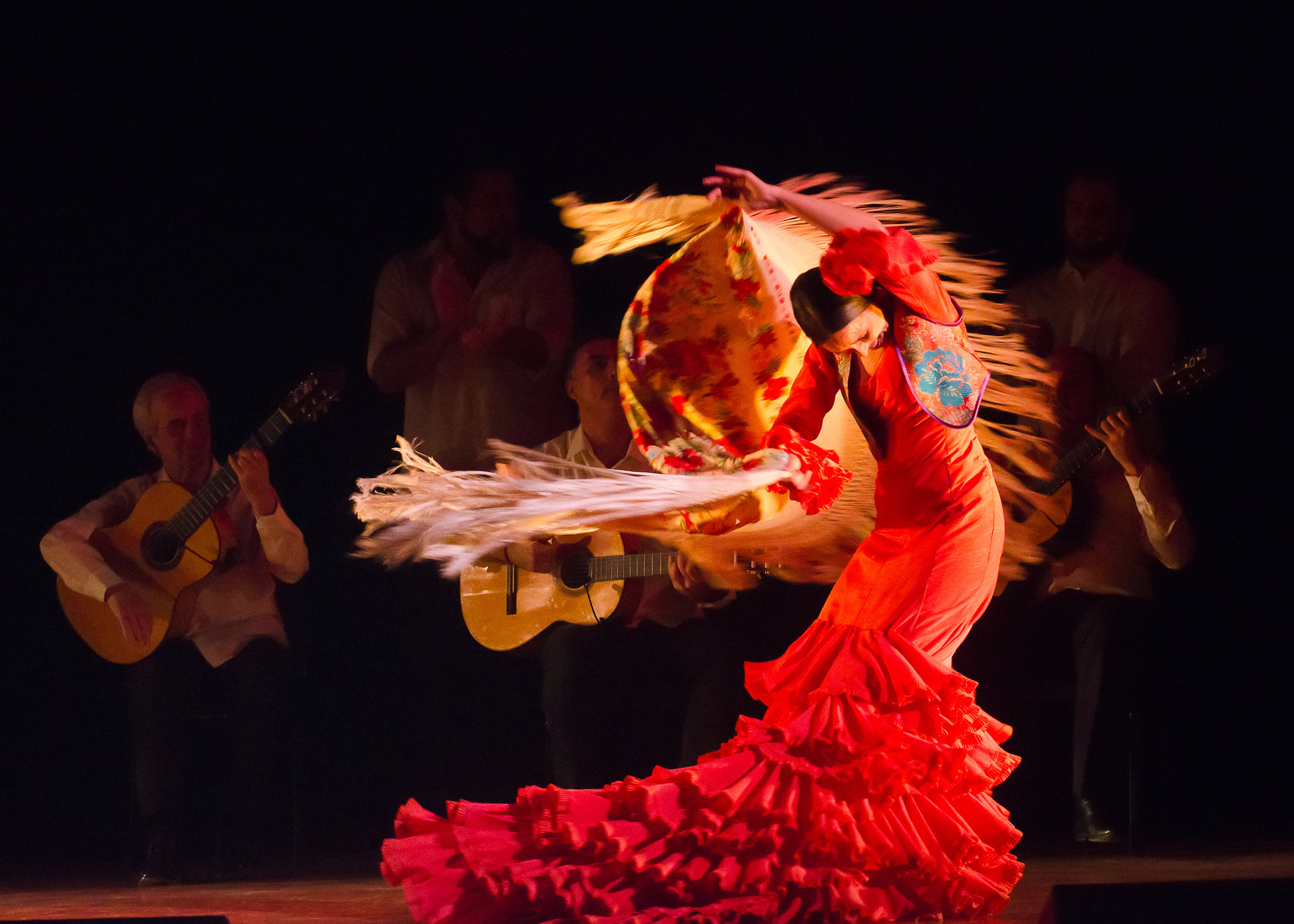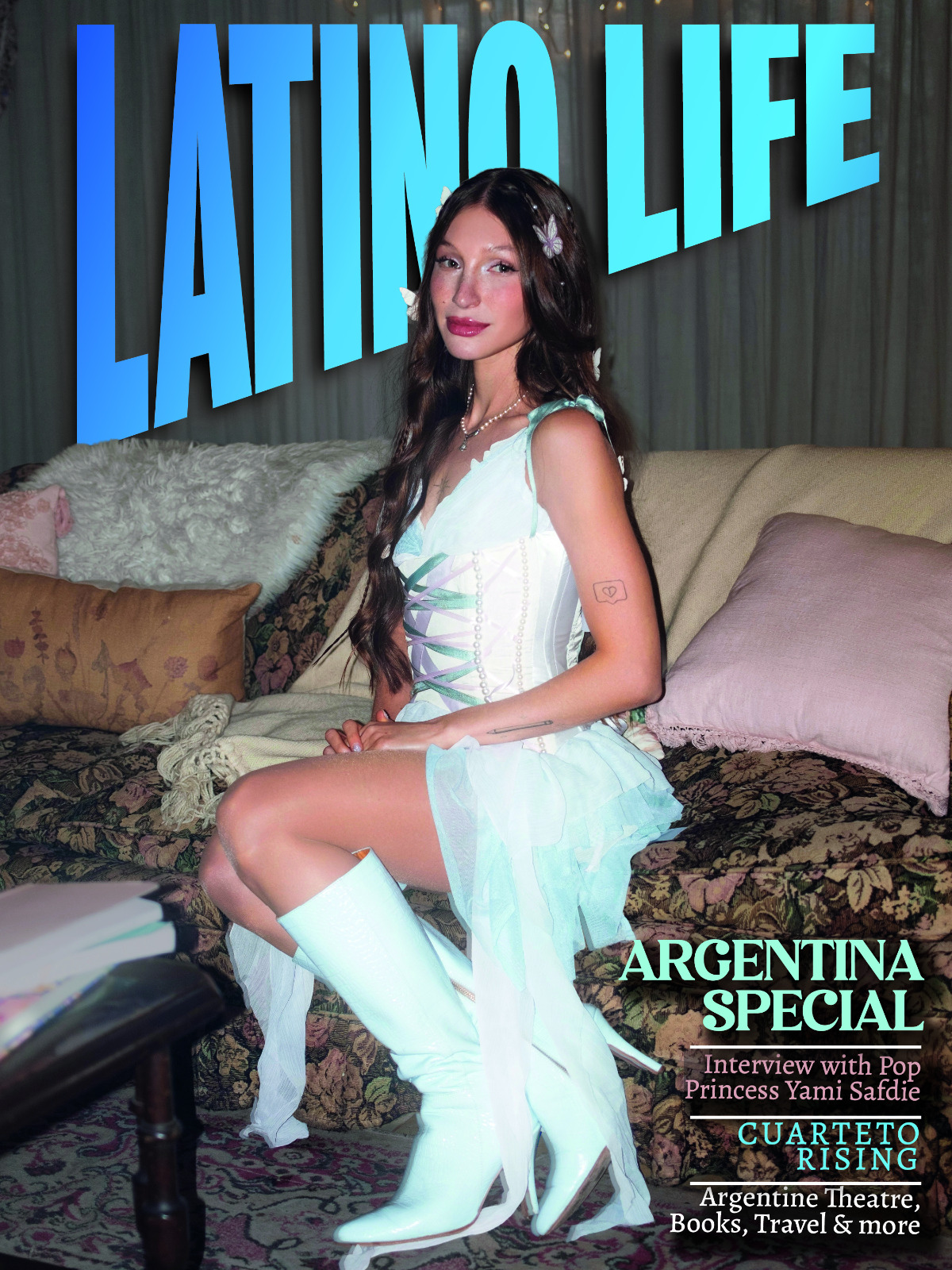Born in the Andalucian city of Córdoba, Paco Peña made his first professional appearance at the age of 12 and in the late 1960s he left Spain for London, where his recitals of flamenco music captured the UK’s imagination. Since his landmark Misa Flamenca, a 1991 setting of the Mass, juxtaposing Peña’s company with a classical choir, Peña has always pushed the boundaries with his music, incorporating London’s international influences, whether African or Latin American, into his Flamenco roots.
Peña's 2010 production Flamenco sin Fronteras explored the 20th century Spanish emigration experience in South America, and in Quimeras (2013) his flamenco singers and dancers told the story of a group arriving in Spain from Africa in search of work, marrying traditional Spanish and African music and dance, described as “breathtakingly beautiful” (Daily Telegraph) after its world premiere. In his new production reunites Paco Peña and his long term collaborator, director Jude Kelly, for an exploration of artistic wisdom and the fearlessness of youth in search for new expression.
The Paco Peña Flamenco Dance Company is carefully composed of dancers of all ages, to express the exuberance and unbridled energy of youth as well as the power of wisdom that comes from age and maturity. Paco Peña emphasizes the importance of collaboration in the development of the shows as he praises the input of Jude Kelly: -
“Collaborating with Jude Kelly is always marvellous. We understand each other and are good friends. She is a person who is super creative and imaginative. When I come up with an idea, she is always able to contribute something more, bringing out aspects that only she could imagine. She knows how to emphasize the dramatic sensibility of the pieces, which is hard, as music is an abstract art. So that within the abstractions. It’s vital to bring out the imaginative aspects that Jude, with all her resources manages to do, finding the way to tell the story and the details of what we want to express.”
How far can one bring narrative to dance? It is not an easy task, but in Flamenco there’s also the added element of Cante flamenco, with lyrics that can also add an important ingredient to the performance.
“For example, in SOLERA, I am hoping to project some verses of the Spanish Poet Antonio Machado who is marvellous. He has one poem that reflects on the passage of time and what it means to be human, it is sad and brutal, but very strong.
“Cuando recordar no pueda, ¿Dónde mi recuerdo irá? / Una cosa es el recuerdo, Y otra cosa recordar
(When I can no longer remember, where will my memories go? / One thing is the memory, and another to remember.)"
This poem, ‘Cuando Recordar No Pueda’ by Antonio Machado, carries with it a lot of the emotional content behind Peña’s new show, SOLERA, as Peña explains: -
“Life is the container in which we hold our memories, so when you can no longer think of them, where do they go? Even the personality would have escaped from that person. But I don’t want to dwell only on the sadness… but to reflect on the human condition and who we are. It’s also topical, as there is so much dementia and even Alzheimer’s in our time, so we are very aware of these things. The imagination of the poet Machado captured that thought. In this new show, SOLERA, we touch on life and death, but also with optimism, to bring out the energy, equally brutal, of youth, their artistic spirit and legitimate ambition to create something new, to break the old moulds and move forwards.”
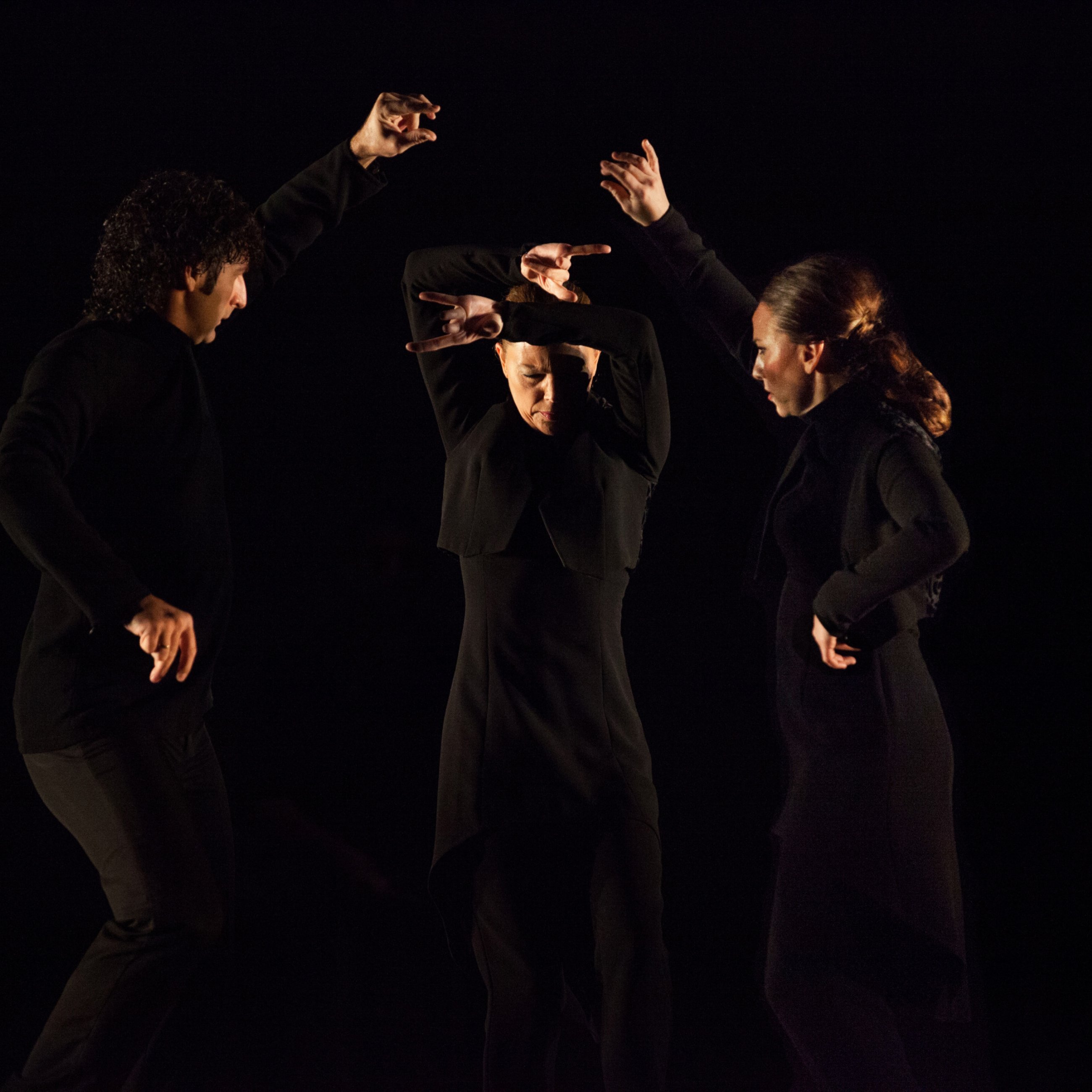
Paco Peña Flamenco Dance Company
The word SOLERA has many layers of meaning. It means maturity and wisdom, tradition, as well as the maturation of wine in a vintage. Peña chose this word to express how time also passes with a human being, much as with wine, to also reach their own ‘solera’.
“In much the same way as a marvellous liquid can be decanted, so culture and art and its expression can reach maturity with time. Youth probably sees this differently. They need to break those moulds and create something new and different. Yet, even they need to be careful, much as you need to care for the must (grape juice) if you are to achieve the best results. So, this is what we hope to do with our show. “
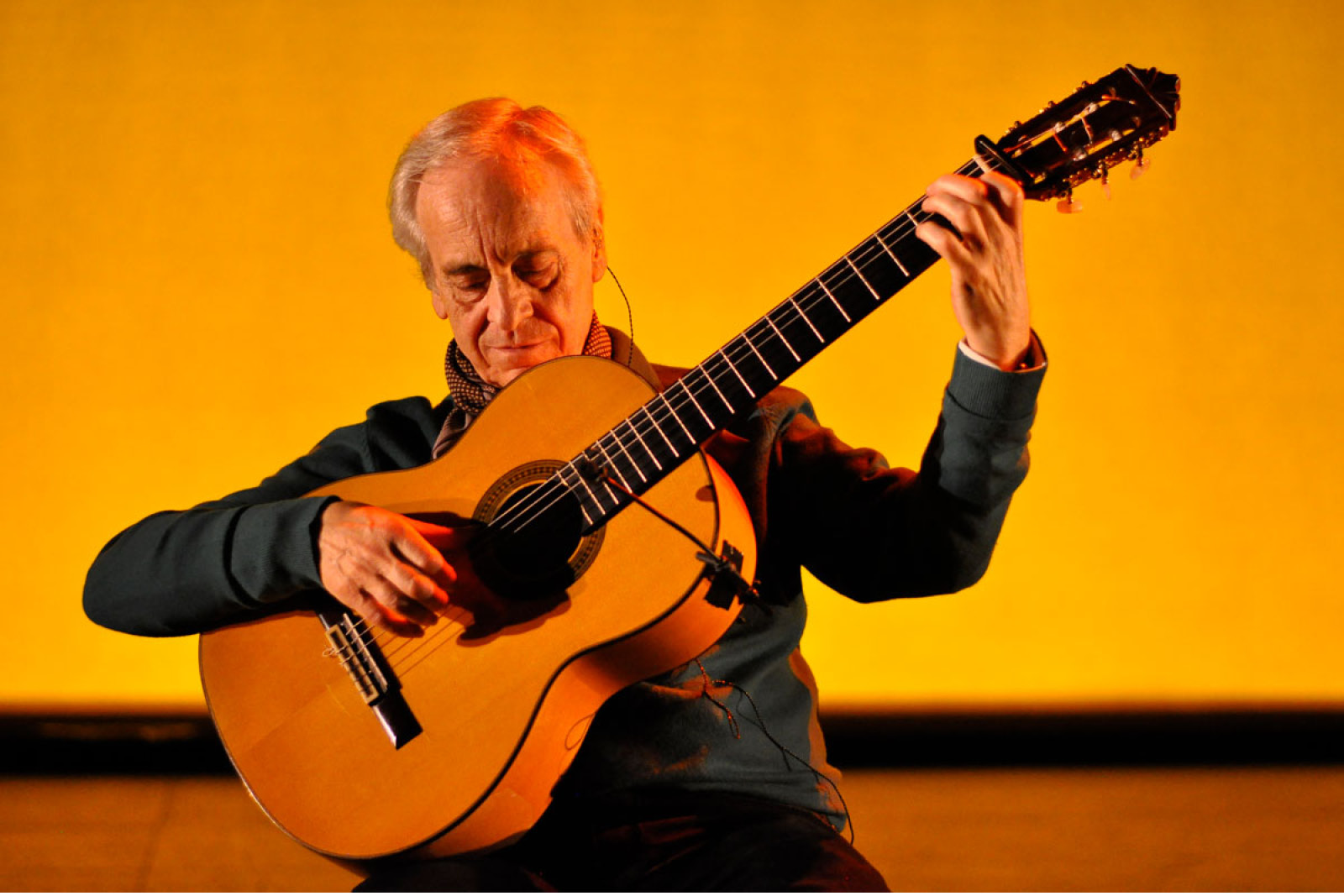
Paco Peña
Born in the city of Córdoba in Spain in 1942, Francisco ‘Paco’ Peña was initially taught to play the guitar from the age of six, by his older brother. Though he excelled, he had no expectations of becoming famous, and, as he says, he was literally plucked to stardom by others when he was invited, still very young, to join professional flamenco companies in Madrid & the Costa Brava.
Flamenco is not a written tradition, it emerged from the gypsy, (gitano), sub-cultures of Southern Spain that had become, historically, intertwined with Arabic influences. This explosive combination created what today is known as Flamenco. It expresses the deepest traditional roots of Andalusia in particular. The cantaores have developed a form of singing the poetic stanzas to the syncopating rhythms of the guitar accompanist, often enhanced with percussion (cajón flamenco) and complex rhythmic clapping. The dancers then complement this tableau, with rhythmic footwork taps and castanets. The duende (spirit) of flamenco aims to express a purity of emotion, an honesty, even existential angst and eroticism, combined with the primal power of life.
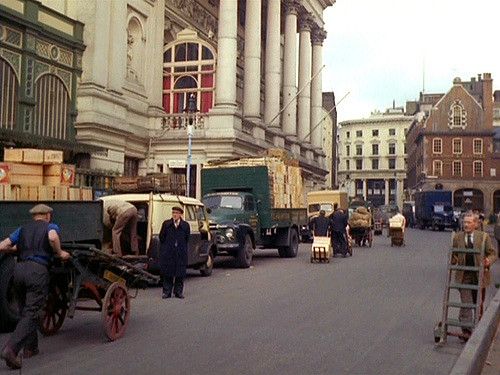
The Royal Opera House in Covent Garden with market traders in the 1960s
The true artist in Paco Peña led him and a group of friends to seek greater challenges further afield than the tourist venues of the Costa Brava, so, in the late sixties, he arrived in London. He started playing at the Restaurante Antonio in Covent Garden, in the days when the vegetable and flower market was still in full swing. Playing his guitar, a stone’s throw away from the Royal Opera House, Peña gradually made his name.
In 1967, his appearance at the Wigmore Hall, let to further concerts at New York’s Carnegie Hall and the Royal Albert Hall. Despite making his name as a soloist, his heart remained with the more traditional forms, as he yearned to work with others and develop his art as an accompanist to cante flamenco and dance.
“I never thought I would become a soloist. My illusion was to emulate and try to play like the great artists that I admired, like Niño Ricardo (1904-1972). After him, Sabicas (1912-1990) who also influenced me very much. I have always loved Cante flamenco, and I spent much time listening to old recordings of these great guitarists, one of the best being Ramón Montoya (1880-1949) from Madrid. Montoya accompanied a great many cantaores and cantaoras, and he invented many things. With that illusion, listening to these greats, I never thought my name would be in lights with them, it was a dream come true!”
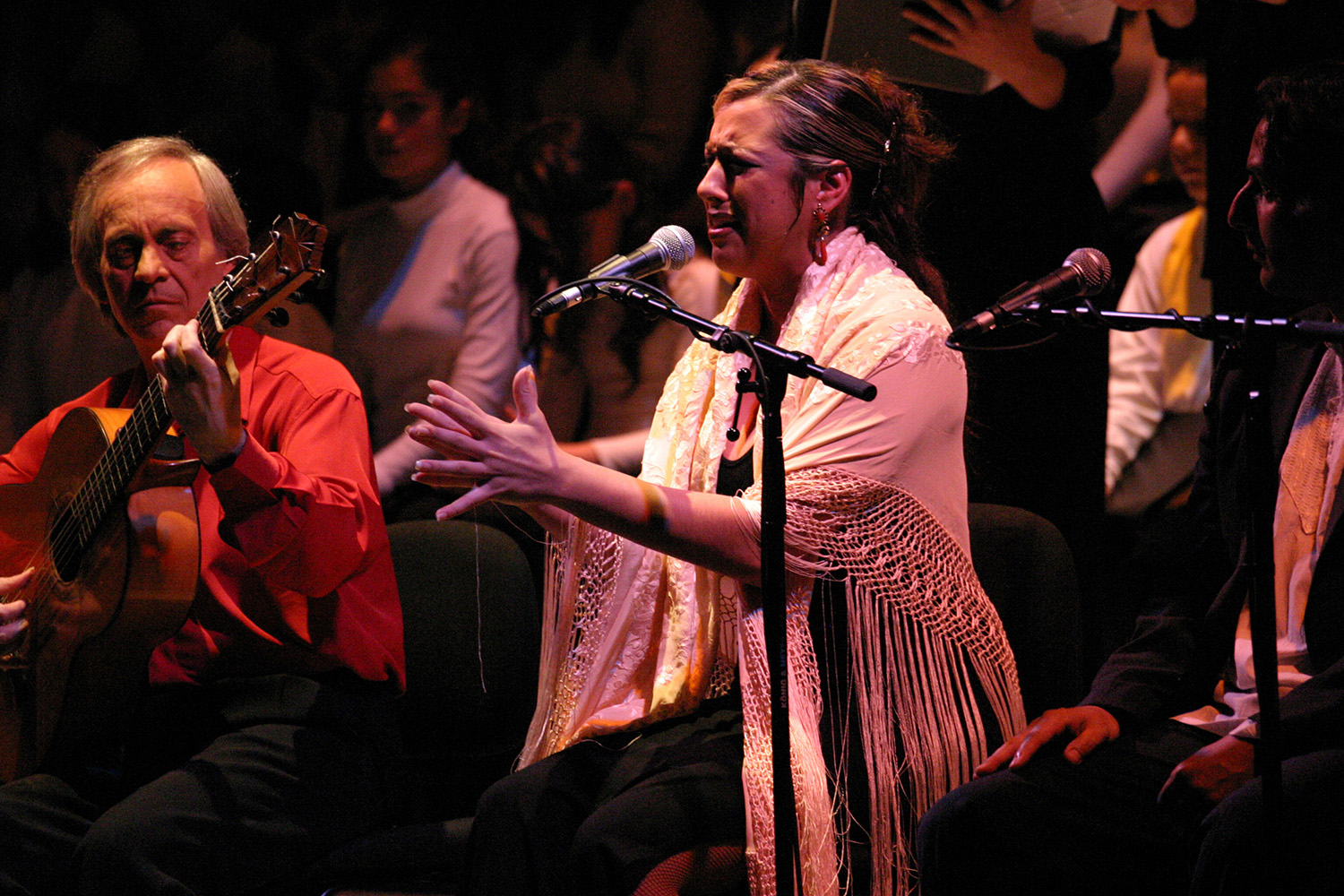
Paco Peña with cantaora
To be an accompanist is a very demanding core element in Flamenco. The accompanist needs to listen, feel and bond intimately with the cantaroes, dancers and other musicians in the troupe. He has to feel the direction that the cantaor and the dancers are taking emotionally, to be able to provide the musical structure in which they can excel. It is very specialized and not everyone can do this. There are excellent soloists who fail to become good accompanists. Paco Peña is one of those who has achieved this.
Peña plays guitars by lutier Gerundino Miguel Fernández García (1931-2006), from Almería, who is considered one the world’s greatest makers of flamenco guitars. It demands a very special talent to create the specific pure and bright tones required of a flamenco guitar. No coincidence that Gerundino guitars have also been the favourite instrument for other musicians like Paco de Lucía, Tomatito and Vicente Amigo.
For Paco Peña his company began with a modest troupe of 4 members, or 4 gatos (cats) as he called the). A cantaor, two dancers and Paco Peña on guitar. He then hired an actor, who introduced the numbers, elucidating some of their history, meaning and intent. In the early days, Flamenco was not so well-known outside of Spain.
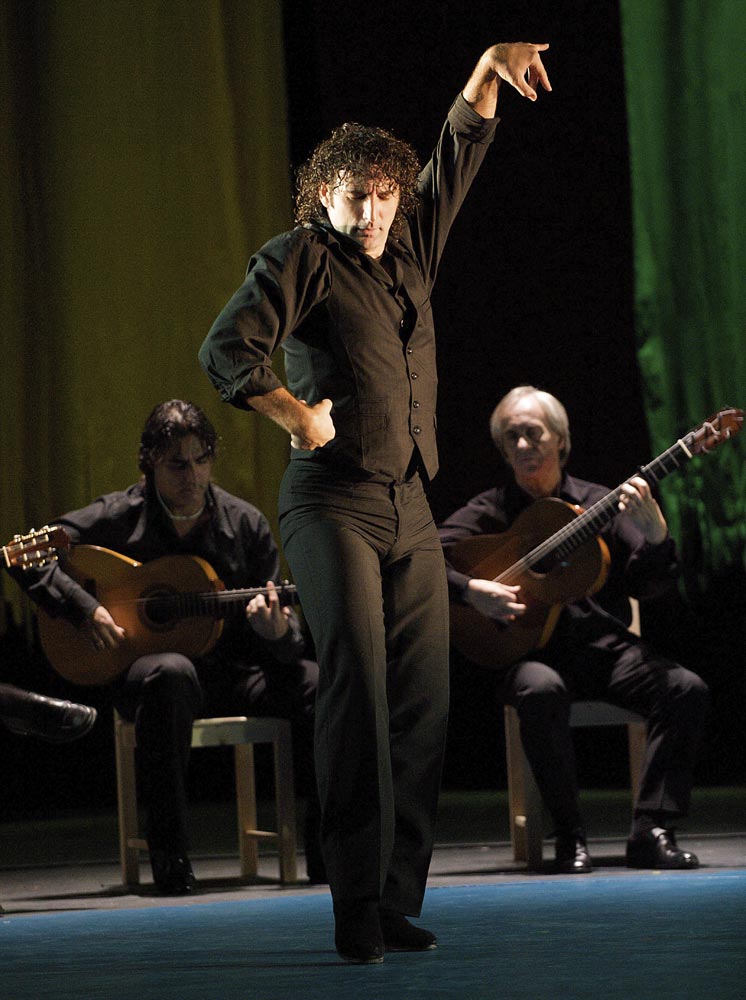
Paco Peña Flamenco Dance Company
Loving, as he does, all forms of different music and cultures, Peña wove this passion into his shows and recordings. He toured with Argentine guitarist, composer and singer Eduardo Falú. The result was the album ‘Encuentros’ (Reunions) still available second-hand online. This collaboration resulted from a chance meeting in Germany with an Argentine music agent.
“He came and proposed that I work with Falú. I had previously seen Falú in London, but on this occasion, I was invited to work with him. I discovered a marvellous person, not only as a musician but as a human being. We became great friends. I toured together with Eduardo Falú and learnt a great deal from him. I have always had a great sensibility for Argentine music and I could see the integrity with which he was able to elevate folklore to a singular new level, without it ceasing to be folklore. I also met Ariel Ramírez. It was all a marvellous experience.”
Encuentros CD Paco Peña and Eduardo Falú -1989/ the album-
Paco Peña has also shared the stage at the Festival Hall with artists like Jimi Hendrix and John Williams and this love of different types of music and how they all relate, led to one of his favourite shows Flamenco sin Fronteras (Flamenco without borders), which examines how Latin American, and Venezuelan music in particular, still reveal links to flamenco today.
“I studied the traditional rhythmic music of Venezuela and found that some elements had been carried over from Spain and radically changed there. There is a beauty in how music travels, so I created Flamenco sin Fronteras. I wanted to combine Flamenco and Latin American music, not only Venezuelan, to show how, when music travels, it’s nurtured and developed and there was a joy in seeing how my own culture had been taken to so many parts of the world.”
Flamenco sin Fronteras 8:05 min
In 1991, Peña composed the MISA FLAMENCA, which represented Spain at the 1992 Seville Expo. It emerged from his desire to unite a Catholic view of the religious Mass, to the musical traditions of flamenco. He understood that they share a spirituality, either to reach God or the spirituality of a an art form. Both have trance-like elements to heighten the emotional experience. This emotional mixture of the Catholic mass and Flamenco, accompanied by a classical choir, took the musical world by storm
A CompÃs- recorded at the UCLA Royce Hall, Los Angeles. 10:16 min
In 1999, at the Peacock Theatre, Paco Peña’s MISA GITANA (Gypsy Mass), based on the life of the much- loved Spanish painter Julio Romero de Torres (1874-1930) who was also from Cordoba). The show turned out to be the longest ever run for a flamenco show in London’s West End. Paco Peña consolidated all this valuable experience when he created the Centro Flamenco Paco Peña, in Córdoba. He created it in order to be able to establish the annual Córdoba International Guitar Festival, of which he is now the artistic director. There were no guitar festivals of this type in Spain at the time, which was astounding, for a country so renowned for this instrument.
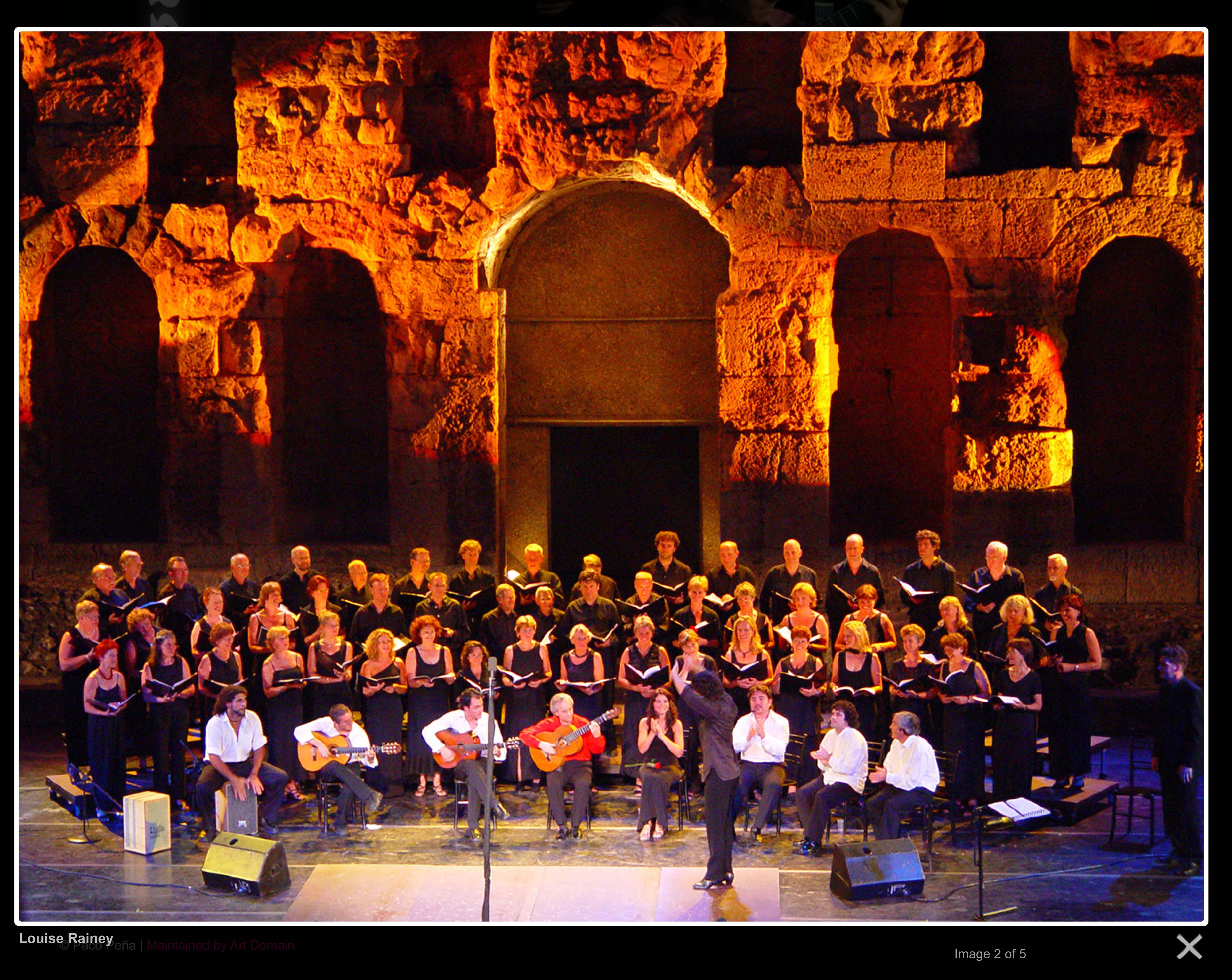
Misa Gitana in Seville
Today, Paco Peña is as full of energy and enthusiasm as ever as he looks forward to the new show 'Solera': -
“There’s nothing like facing a live audience that you must move, an audience that will see you sweat, live and share that experience with you. That has always nourished me and stimulated me to go forwards … it’s an adventure I love because it makes me feel alive!”
The World premiere of SOLERA will be on from 20-24 April at Sadler’s Wells Theatre London
Prices from £15.00


